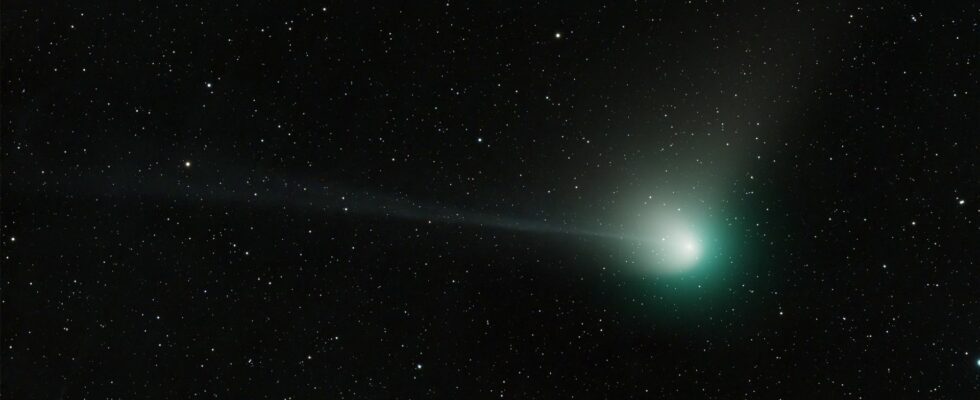Comet ZTF will probably never return to the solar system. You should not miss the opportunity to observe it with the naked eye. But, where does it come from? C/2022 E3 (ZTF) comes from the outer reaches of the solar system.
Now is the perfect time to see Comet ZTF with the naked eye. On February 1 and 2, 2023, comet C/2022 E3 (ZTF) passes closest to our planet, on its trajectory around the Sun. To find out where to observe it in the sky, you can consult our map of the visibility of comet ZTF in France. It is advisable to favor a place far from light pollution to distinguish this beautiful green comet. Otherwise, it is still possible to admire the photos of comet ZTF.
The passage of this celestial object in the solar system is a rare opportunity to observe it. Comet ZTF will probably never come to see us again next. According to the Institute of Celestial Mechanics and Ephemeris Calculation (IMCCE), ZTF’s visit to our solar system will provide it with energy that will cause it to leave us for good. We know the comet’s future (if it doesn’t disintegrate, like Comet Leonard), but what do we know about its past? Where does C/2022 E3 (ZTF) come from?
Comet ZTF was stored 1 light year from the Sun
” In the past, it was stored, like billions of other comet nuclei, in the Oort cloud, about 1 light year from the Sun. “, indicates the IMCCE. The Oort cloud is a hypothetical large structure, which would lie well beyond the orbit of the planets. It is based on the orbit of comets that scientists have determined that this cloud must be their origin.
The solar system is thought to have formed from an interstellar cloud (a buildup of matter in the galaxy). With the accumulation of dust and the condensation of gas, comets formed. It seems that these small bodies kept in them, in an intact way, the matter such as it was present in the solar system in formation. This is why comets are so valuable for understanding the history of the solar system.
The Oort cloud, a distant reservoir of comets
Some comets formed inside Neptune’s orbit were ejected into more distant orbits. Thus was born the Oort cloud, a veritable reservoir of comets. ” The Oort cloud would be spherical and would extend up to nearly 10,0000 astronomical units from the Sun. It could contain about a trillion comets sums up the Paris Observatory.
When Comet ZTF was discovered in March 2022, it was approaching the Sun. February 2023 will certainly be marked by its passage through the terrestrial surroundings, in addition to other notable astronomical phenomena – you can consult our astronomical calendar for the month here.
Subscribe to Numerama on Google News to not miss any news!
